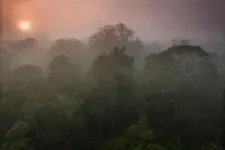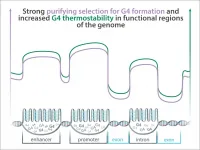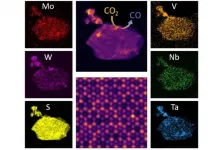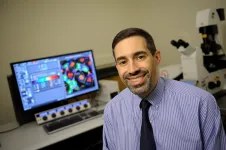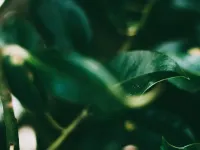A new exploratory case study from Portland State University Associate Professor of Management Theodore Khoury reveals how Syrian refugees in the Za'atari camp reached beyond basic disaster relief support and leveraged social capital to create informal economic systems that helped improve their quality of life. The study, "Towards a theory of informal supply networks: An?exploratory case study of the Za'atari refugee camp," is published in the Journal of Operations Management and co-authored by Ismail Abushaikha of German-Jordanian University and Zhaohui Wu of Oregon State University.
The ongoing Syrian civil war started in March 2011. Between 2012 and 2018, nearly a half million Syrian refugees passed through the Za'atari refugee camp, the world's second largest refugee camp, located in Jordan just 6 km southwest of the Syrian border. In one of the first case studies of its kind, interviews, observation data, field notes, photos and videos collected in and around Za'atari uncovered complex, refugee-led, informal supply networks that contribute to the resilience of the camp and also benefit Mafraq, the Jordanian host community.
The study dispels the notion of refugees as passive aid recipients awaiting charity, and instead asserts a refugee camp as a society with complex social systems.
"Many refugees reside in camps indefinitely and refugee regimes overlook or are incapable of supporting their development needs and ability to prosper socially and find a durable economic livelihood," says Khoury. "When a formal economy is unavailable or fails to include them, informal economies can evolve to serve them and meet these needs."
Given its city-like settings and energetic marketplaces, Za'atari is often profiled as a "success story" in the media and by relief organizations and donor countries. The researchers conducted 52 interviews, speaking with refugees, non-governmental and intergovernmental organizations (NGO and IGO) workers, Mafraq community members, and government officials. The research findings develop a theory of informal supply networks, or an aggregate of predominantly illicit -- yet legitimate -- channels and social relationships that support the economic exchange of goods and services between distinct actors or actor groups; in this case those represented by the interviewees.
"Our theory of informal supply networks offers a new approach to thinking about mass migration and refugee integration," says Khoury. "By understanding social behavior in an extreme context, we can develop more flexible humanitarian relief policy and operations that give refugees agency to create their future through economic exchange."
Supply networks started to emerge when refugees engaged in improvised, secondhand transactions, buying and selling donated relief goods among themselves and with Mafraq residents. Relief goods were also repurposed as new production materials. Refugees in Za'atari coordinated access to critical goods that fell outside the scope of relief-related activities and adopted roles of buyers, suppliers, distributors, wholesalers, retailers, traffickers and service providers. Over time, the formal and informal economic activities of all actors gave shape to the supply networks in the camp.
Three informal supply networks -- building materials and housing, electricity and electrical hardware, and food and goods -- were the case study's focus because products and services associated were critical in meeting the basic needs of refugees and therefore had practical implications for the daily lives of refugees; formal relief operations and refugee-initiated informal operations interacted to support the flow of resources in these networks; and these networks were representative of economic activities involving refugees.
The researchers captured the economic activity of each supply network by mapping the flow of materials with actor social activity and relationships. The mapping revealed where transactions occurred and in what direction; the nature of transactions were not always simple or even obvious. Three key insights led to a more critical assessment of the emergency-oriented, formal relief operations and compelled a refugee point of view: Social ties created prior to the conflict sometimes existed between refugees and merchants or intermediaries within Mafraq, giving some refugees access to resources that others did not have Governance for specific transactions was unique depending on the kind of goods being exchanged Representatives of the camp authority, like security guards, routinely tolerated trafficking, recognizing the mutual development support to the host community
Data collection and network mapping uncovered three theoretical dimensions, which delineated the transactions -- and their functioning -- within the informal supply networks: Positioning of unique social capitals: Social capital is defined as "resources embedded in one's social networks, [and] resources that can be accessed or mobilized through ties in the networks (Lin, 2008, p. 51)." Bonding, bridging and linking represent the three forms of social capital or relationship ties. Bonding accounts for ties that are more familiar, like family, friends and neighbors. Bridging connects actors in parallel networks, like other neighborhoods, clans and social groups. Linking captures ties characterized by differences in power distance, social status or hierarchy. The three forms of social capital defined the boundaries of Za'atari informal supply networks and also expanded boundaries beyond the borders of the camp -- they enabled efficient economic exchanges and cultivated trusting relationships that led to resilient supply networks.
"In 2013, the refugees used to take some of the care packages and sell them in Mafraq stores [...] and buy other things that they needed, so now there is money generating in the camp and in the same time Syrian women started making food and started selling them to the employees and staff of NGOs." (Supply Chain Officer, UNHCR, 2016)
"I used to work in plumbing and now I have a dairy shop [in the market street]. Once one of my friends who owns a restaurant asked me if I could bring chicken drumsticks and I got 15 kilograms of them and they were sold within 3 minutes." (Dairy Products Seller, Refugee, 2016)
Governance of transactions according to specific conventions: The camp's informal economy with supply networks were all linked to the formal relief networks governed by explicit rules and policies and managed through a hierarchy: the Jordanian government entrusted camp management under UNHCR (United Nations High Commissioner for Refugees), which in turn coordinated relief operations of other NGOs/IGOs like Portland-based Mercy Corps. In contrast, the informal supply networks were self-organized and transactions were governed by either culturally- or market-guided conventions. For example, electricity followed market-guided conventions under skilled refugees and a fee-for-service model. Building materials and housing supplies were a combination of both, where community leaders prioritized family members and others with preferential relationships while at the same time materials were sold through a profit-driven underground market agnostic to who purchased.
"Refugees in Azraq Camp [in Jordan] are forced to go to the shopping malls [World Food Program Supermarkets] to buy their goods, which is very expensive, but, here [at the Za'atari refugee camp], we have more options in the market to buy from." (Perfume Shop Owner, Refugee, 2016)
"Bikes from some donors were also distributed at some point and some of them [refugees] got more than necessary and then they sold them. Bikes are a major business in Mafraq now as it is widely used in the city of Mafraq and the camp as well." (Supermarket Cashier, Host Community, 2018)
Legitimation of refugee-initiated economic activities: Camp security guards, often hired locally from Mafraq, felt that the citizens of Mafraq also deserved access to relief supplies; they favored the interests of refugees and locals over law enforcement, since they often came from standards of living that were at or below the level of some refugees. This stance translated into a more permeable or flexible camp border in terms of the kinds of goods that could cross the camp boundary. As a result, guards, as representatives of the camp authority, did not consistently stop the trafficking of goods across the camp border and allowed informal supply networks, as well as the traffickers inside and across the camp boundary, to be legitimated. The Jordanian government and camp authorities recognized that this informality helped sustain the livelihoods of refugees, bring positive economic opportunities to Mafraq and reduce conflict in the camp.
"There are not contracts between the owners of the caravans and the users of the caravans [...]. We don't intervene in organizing the market. We intervene if there is a complaint by others. Although this is illegal [selling and renting caravans], as long as there are no complaints, or this is not making troubles for others we don't intervene." (Community Police Officer #2, Government, 2016)
"They [donkeys and sheep] are allowed but we cannot bring them through the camp's main gate. It is not allowed to bring them legally, but once we have them inside the camp, it is ok." (Bedouin Refugee, 2017)
"The situations faced by refugees are beyond difficult and life in Za'atari is a far cry from the life they were forced to leave behind," says Khoury.
The study brings to light that the international policies on refugees and refugee regimes are outdated. Created shortly after WWII, these policies are poorly structured to handle large scale migration as has been seen today in Europe and Southern Asia. The study suggests that given prolonged stays in "permanent temporariness," humanitarian relief operations and host communities need to approach the condition of the refugee camp with longer term solutions in mind.
"When we value the dignity and human agency of refugees and allow for their cultural and social capital to be asserted on their terms, communities can flourish," adds Khoury. "With more thought invested into how refugees can be welcomed and integrated into communities, perhaps we can begin to shift the migration discourse into opportunities for positive social change, rather than ongoing situations of 'crisis.'"
INFORMATION:
